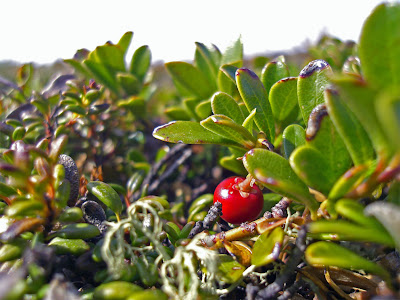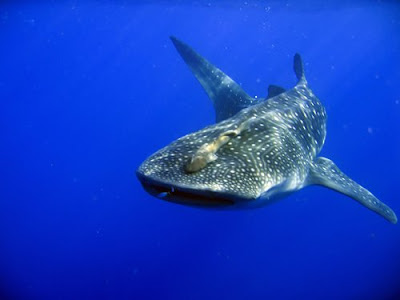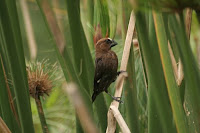It is migration time and all sorts of interesting things are popping up here in the alps. Last week we went for a lovely afternoon walk around the pond in Seefeld. I had decided to leave the digiscoping equipment at home and just go to enjoy the ducks, coots and lovely scenery. Lo and behold, as we were heading back to the car I found a rather funny looking mallard sitting on a pole:

Not much of a mallard, I know. But I was trying to convince myself that I was not a complete fool for having left my digiscoping stuff at home when there was a tern right in front of me. Out of desperation, I whipped out the cell phone and tried to take some photos through my binoculars. The photos you see here are the result. Not too bad, I am rather impressed. One can identify the species, and even see that it is a juvenile!
Digiphoning - for want of a better word, I suppose we could call this form of photography digiphoning, the desperate little sibling of BAD photography (
Binocular Assisted Digital photography). i found it kinda difficult to align the flat phone face with the binocular eye cups, but with a little practice I managed to get batter at it. The obvious problems are the same as with digibinning and digiscoping - with low light (it was just starting to drizzle), it is hard to get good colours and a fast, sharp image; a smaller camera sensor tends to produce poorer results; and vignetting can be a problem (particularly because phones tend not to have external lenses which one can use to align the lens correctly). This was my first attempt:
 The Black Tern
The Black Tern
Chlidonias niger - Trauerseeschwalbe
IdentificationIn non-breeding plumage, the black tern is characterized by a falcon hood-like black cap, and a little black (dark grey) line over the shoulder, extending into the breast. Also keep a look out for the darker scapulars (the little feathers on the shoulder of the wing). Adults in winter plumage have a matt grey colour on the back, with juveniles having a little pale tips to the feathers on the back and coverts. You can see the lighter feather edges on the first photo, above, making this a juvenile.
Conservation and biologyEvidently, the population of European Black Terns decreased by about 95% during the last century! Albert Beintema attributes this mainly to drastically reduced reproductive output, particularly caused through the loss of suitable habitat (or microhabitats), and diversity of food sources (Beintema AJ 1997 Colonial Waterbirds 20/3). I found the latter of particular interest. Black Terns evidently need access to a large variety of insect food because single populations of one particular species are more likely to experience drastic fluctuation during the nestling period, meaning that there is a greater likelihood that the chicks will starve because the insect population on which they rely crashed. Furthermore, Beintema suggests that Black Tern chicks require fish in their diet, because of the higher level of calcium they provide. The use of fish to feed young may also be more energy efficient (Gilbert AT & Servello FA 2005 Waterbirds 28/4). Lakes with low fish populations (through nutrification, acidification etc) thus become unsuitable breeding sites for the terns.
It seems that catching fish becomes much more difficult for the marsh terns (
Clidonias spp.) when the weather is bad. Unlike the sea terns, marsh terns do not dive into the water to catch prey items but rather pick stuff from the surface. When the water surface is choppy and wind-blown, catching fish to feed hungry nestlings becomes very difficult. It is at these times that breeding Black Terns have been seen collecting earthworms to supplement the diet of the nestlings (Beintema AJ 1997 Bird Study 44/1). Albert Beintema also reports of a fascinating phenomenon (rarely) displayed during bad weather periods -
intraspecific kleptoparasitism. Evidently, breeding birds who are struggling to support their nestlings during bad weather periods will sometimes go to the nest of another breeding pair, position itself between the nestlings and beg for food from the large-prey-item carrying parent. Snatching the fish away, the thief then takes the prey item off to feed its own young. In this way, some terns were able to significantly increase the amount of food they were able to feed their nestlings.
The migration of Black Terns is also fascinating. Evidently, European and Asian Black Terns congregate in two wetland areas before departing South: IJsselmeer (The Netherlands) and Sivash (Ukraine)(cf. Van Der Winden J 2002 Ardea 90/3). They depart in the evening, flying up relatively high (more than 500m), and fly through the night and there are no significant stop-over sites on their 3600 km journey in to Africa!
Black Terns can live at least 21 years (Staav R 1998 Euring Newsletter 2)
There is lots happening at the moment in the world of Alpine Birds, so keep a look out for interesting things flying over! (oh, and feel free to email me to tell me about what you see)
Happy birding
Dale Forbes

































.jpg)



